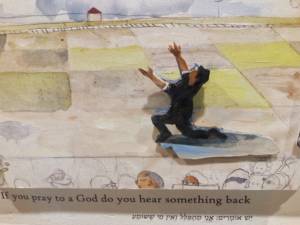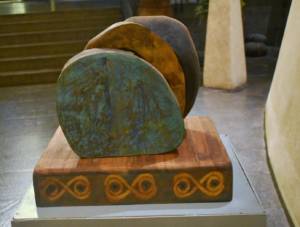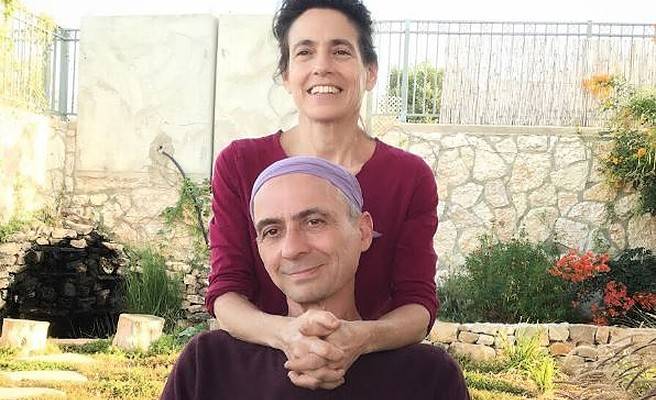The couple, who made Aliyah from America, work independently in adjacent studios in the Judean community of Tekoa, where their inspiration flows from the ancient hills and olive groves.
By Judith Phillips, Exclusive to United with Israel
The Jerusalem Biennale is on display until November 28 across 12 venues in Jerusalem’s City Centre, with 200 participating artists from 15 countries. The theme of this year’s festivali was “For Heaven’s Sake” – a platform for professional artists and curators who “grapple with Jewish thought, tradition and experiences in their work and infuse them with something fresh and original.”

(Jean-Pierre Weill/Courtesy)
Two of this year’s artists are a married couple with very different talents and perspectives. Rachel Rotenberg and Jean Pierre (aka Joel) Weill made Aliyah (immigration to Israel) four years ago from the US, following their children, and have their home and studios in the beautiful community of Tekoa, situated in Gush Etzion in Judea. Rotenberg is a sculptor, whose installations are made from cedar wood. Weill is a painter, writer and illustrator.
Rotenberg’s work, titled “Transcendence,” was shown in Jerusalem at the stunning Van Leer Institute, where the beautiful gardens and main hall provide a perfect setting for her works. Weill’s work is displayed at the Wolfson Museum of Jewish Art in the center of the Israeli capital. Weill’s exhibit, titled “Evolve,” is his Magnum Opus, an illustrated 3D book explaining his take on the Meaning of Life based on events recorded in the Book of Genesis.

(Rachel Rotenberg/Courtesy)
United with Israel asked the artists about their journeys, both artistic and personal.
Rotenberg was born in Toronto and studied art there as well as in Jerusalem and New York City, where she focused on sculpture. In 1984, she moved to a studio in Williamsburg, Brooklyn, and made the decision to use wood as her primary medium. She met Weill in New York that year and they settled in Baltimore before moving to Israel in 2015.
Rotenberg imports the cedar wood that she works with. She starts with pencil drawings and then proceeds to cut, glue and join the pieces of wood together. She uses oil paint and linseed oil to finish the pieces.
When I visited her exhibitions both in the summer and at the Biennale, I was fascinated by the shape, flow, size and power of her work. It invites the viewer to come closer and examine the structure, the nature of the wood and even the heady aroma of the cedar meat. I must admit that I stood there actively inhaling the scent of the pieces, which still carried the memory of the forests where they grew.
Weill was born in Paris and grew up in New York City, where he worked for many years in his family’s art business while painting in his own right. His speciality was vitreography – painting on glass. He still creates pieces of vitreography but his great love (other than Rachel and his family) is writing and illustrating books, which he refers to as “children’s books for adults.”
A Story of Man and the Nature of Free Will
Weill’s work blew me away. I have seen 3D books but nothing like this: more than 70 individually hand-drawn, painted pieces were hung on the walls, telling the story of the creation of Adam, his fall, the story of Cain, and the story of Abraham and Isaac. My description can’t possibly do his work justice, but I was mesmerised as I went around the room, reading the book. This is no children’s story, it’s the story of Man and the nature of free will. It brought me to tears.
Weill and Rotenberg have a rich working and family life in Israel. They have five children – three in Israel and two in the USA, – and nine grandchildren. They work independently, in adjacent studios in Tekoa, where their inspiration flows from the ancient hills and olive groves.
It’s a more intense life in Israel, Weill says, but perhaps that is what sparks their unique creativity. With this talented couple living and working in Israel, we are all privileged to benefit from their gifts.

